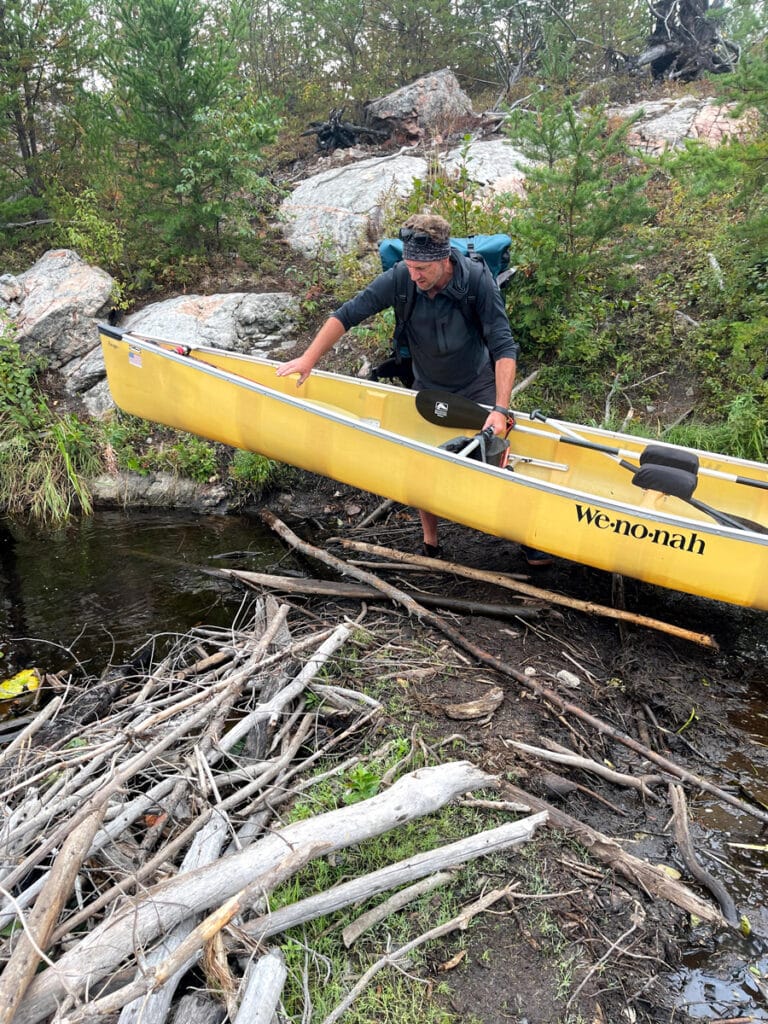I had been looking forward to this day for years. Since our first camping trip in the Superior National Forest when we portaged into the BWCAW, I longed for the day that we’d have the knowledge, skills, and gear to do an extended overnight trip. Now here we were, less than a decade later, with hundreds of nights and miles under our belt, ready for the next big adventure.
Although I’d spent the previous year researching, planning, and preparing, I was still a bit worried. I wondered if we had what it takes to make it nine days in the wilderness. Did we have enough gear? Did we have too much? Would we be able to do those portages as we practiced? What if something went wrong? But we were committed to this journey and looking forward to the opportunity to challenge ourselves, learn, grow, and more than anything else, disconnect and enjoy some needed solitude.
All of the planning, practice, and preparation paid off and our first Boundary Waters Canoe trip was a success. We learned so much that has helped shaped every following trip. But I know that I’ll never forget the magic of experiencing a Boundary Waters canoe trip for the very first time.
As each season passes and we gain more experience, I’m surprised by how much is left to learn. Every year we dial in our skills, gear, nutrition, and processes to enjoy more efficient, fun, and safe trips. I imagine this will be true as long as we are able to take these canoe trips. And if I’m being honest, that’s part of the fun.
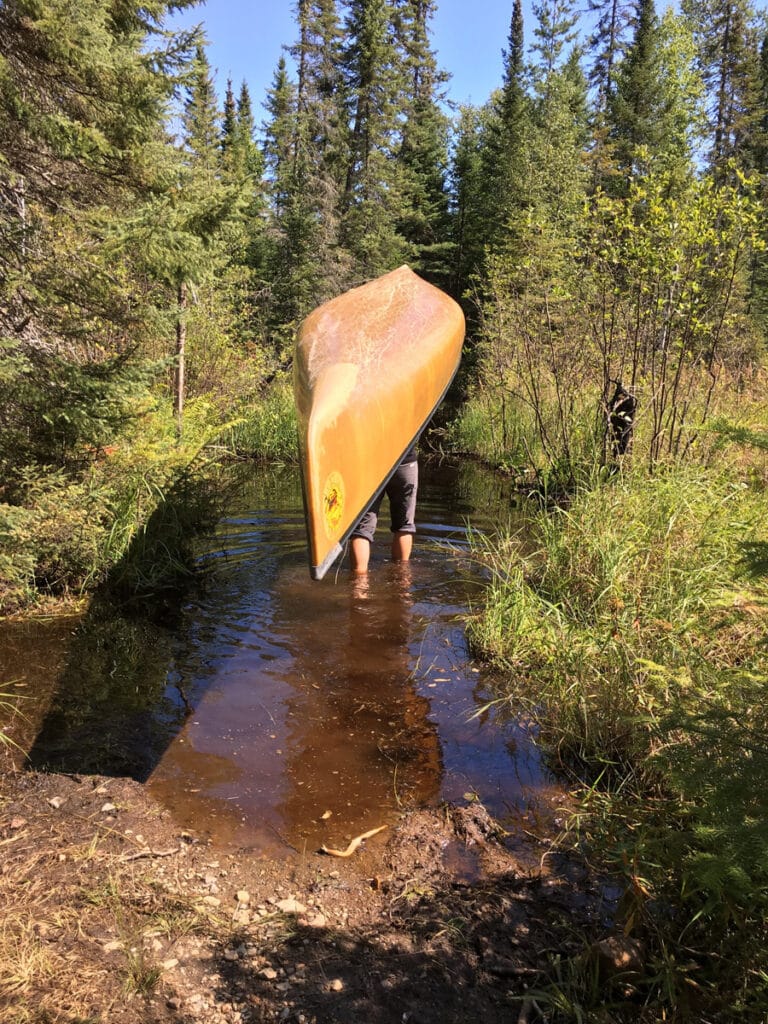
The Boundary Waters is a challenging and beautiful place to disconnect. If you are willing to put in the effort, you can immerse yourself in solitude that few people have the privilege to experience. And with this comes the reality of the wilderness. The terrain can be rugged, the weather unpredictable, and the bugs hungry. There are no signs to keep you on track. And wireless service is incredibly rare.
I highlight these points not to scare you, but to help you prepare to have an amazing trip and a longing to return again and again. Through my personal experience, I created a list of questions to ask yourself before booking your first Boundary Waters permit. The more honestly you can answer these questions and the more group members you involve, the better your trip will be when the time comes.
Remember that there’s no right or wrong way to plan a BWCA trip. There are rules and regulations to follow, but beyond that, everyone does the Boundary Waters a bit differently. These questions will help you plan a trip that’s right for you.
10 Questions to Consider
What are your goals and expectations for the trip?
What are you hoping to experience on your trip? Are you looking for solitude? Great fishing? Do you want to move around and see a lot? Or slow down and relax? What do you want to come out of this experience feeling?
Write down at least three things you hope to get from this trip and then ask the same of your trip companions. Some of my goals this year include challenging myself, experiencing new places, and slowing my roll so I can relax a bit more.
Where do you want to go? What do you want to see and do?
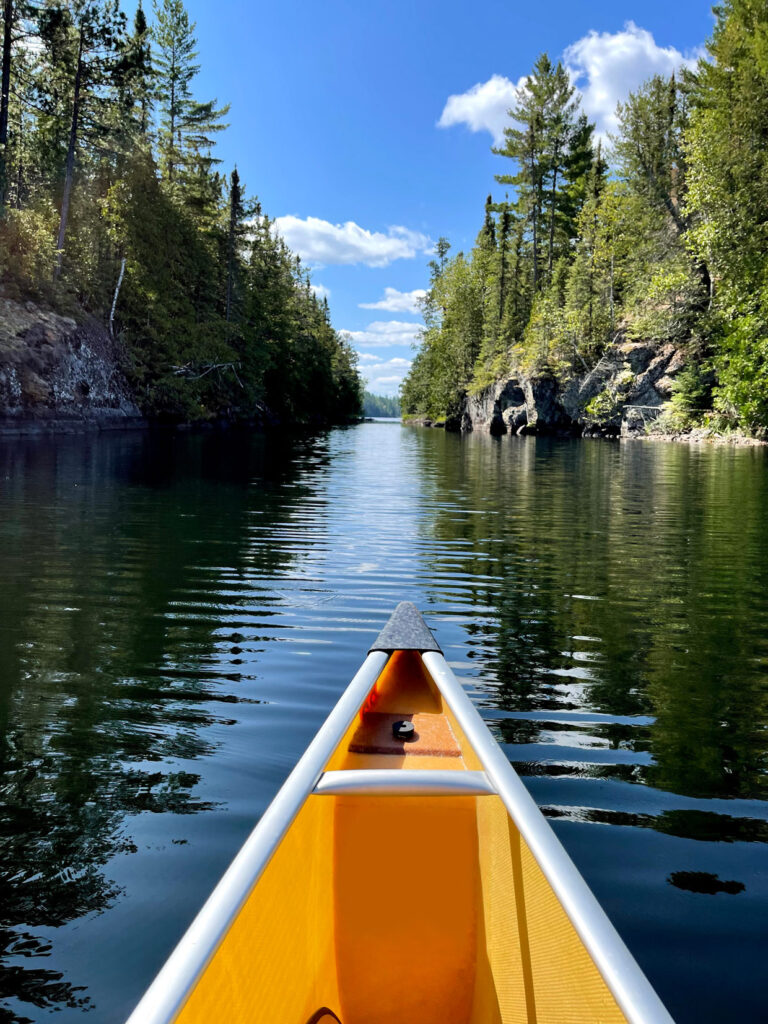
The Boundary Waters is more than one million acres, extending nearly 150 miles along the international border with Canada. There are more than 1,200 miles and 2,000 campsites, all accessed through close to 60 entry points. The sheer number of options can feel overwhelming.
It is commonly said that the western entry points, in the Ely area, offer flatter terrain and easier portages. The eastern entry points, closer to the North Shore, are said to have more elevation changes and more challenging portages. While this is a good general rule, we’ve found challenging routes throughout the wilderness. If this is a concern for you, pull out some maps and study the contour lines. Check out online resources like BWCA.com to explore details for nearly every entry point and portage, and get inspired by user-submitted trip reports. Talk to outfitters and have your trip planned by an expert.
Would you prefer larger lakes with fewer portages but the potential for big winds and more people? Or do you think you’d like smaller lakes, rivers, and streams with more portages and the opportunity for more solitude?
Are there any specific sights any of your group members want to see? What activities are most interesting to your group? How about fishing? If you’re planning to fish you might consider the species you’re hoping to catch and the time of year they’re most active and legal to catch. Once your group has decided on your top priorities, it will be easier to narrow down your options.
What time of year do you want to go?
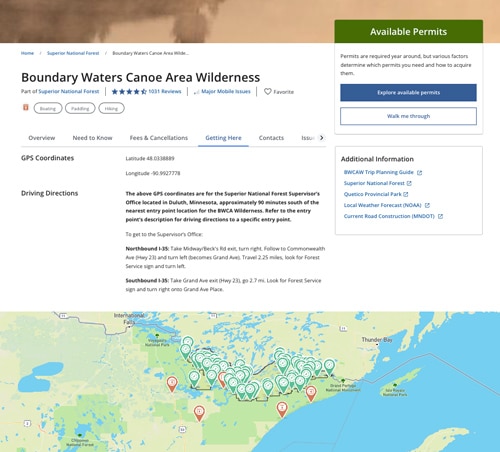
The BWCAW is open year-round, although if you want to paddle, you’ll need to go after ice-out and before the ice comes in. Some years the ice hangs around into May and usually returns in October. The quota season, when entry point permits are limited, is May 1 until September 30. There are no quotas from October 1 to April 30, although a permit is still required. Permits for the upcoming quota season become available on the last Wednesday of January at 9am. The most popular dates and entry points can go fast, so prepare to have alternate dates and points of entry.
Your answers to the previous question could influence when you decide to go. For example, walleye are said to be more active earlier in the season. And your window to catch a lake trout ends on September 30. If swimming is one of your main goals, the lakes are warmest in July and August. But the bugs are typically hungriest mid-June through mid-August. You’ll also see the most people during this time.
Boundary Waters Permits are reserved at Recreation.gov here.
The BWCA is beautiful year-round. Pick a time that works best for you and perhaps you might try something else next time. We always experiment with different dates and have a blast every trip, even if it’s blazing hot and we expend more calories swatting deer flies than we do getting to our campsite.
Who will be joining you?
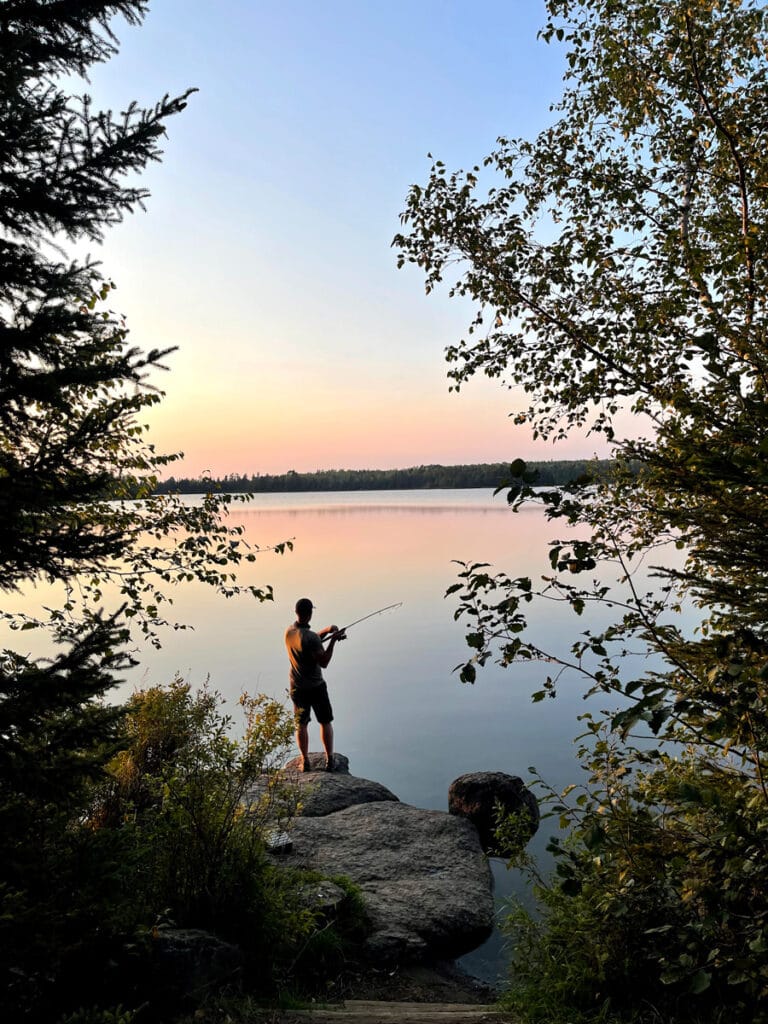
Your trip companions are an important consideration when planning any trip to the BWCAW. The first thing you should consider is that your group size in the Boundary Waters is limited to 9 people with a maximum of 4 watercraft. Smaller groups have less of an impact on the environment and other visitors. And a smaller, quieter group will increase your chances of seeing wildlife.
It’s nice to travel with people who have similar interests, goals, and expectations, or at the very least are willing to give and take. For example, my husband could spend all of his free time fishing. I, on the other hand, want to catch my dinner and be done so I can lay in my hammock and read. We both give in a little so that we both get what we want from our BWCA trips.
Before you go, it’s a good idea to discuss everyone’s goals and expectations as a group. Try to agree on as many specifics before you take off to ensure your trip is spent connecting and having fun and not resenting and arguing.
What are the knowledge, skill, and fitness levels of your group members?
Once you’ve assembled your group, consider the skill and knowledge level of each individual. Understand, as well as you are able, each person’s physical abilities and limitations. Plan the trip around the group members with less experience. And remember that it always takes a little bit longer than you plan for, especially on the first and last day when you’re sure to encounter busier portages.
How far do you want to travel?
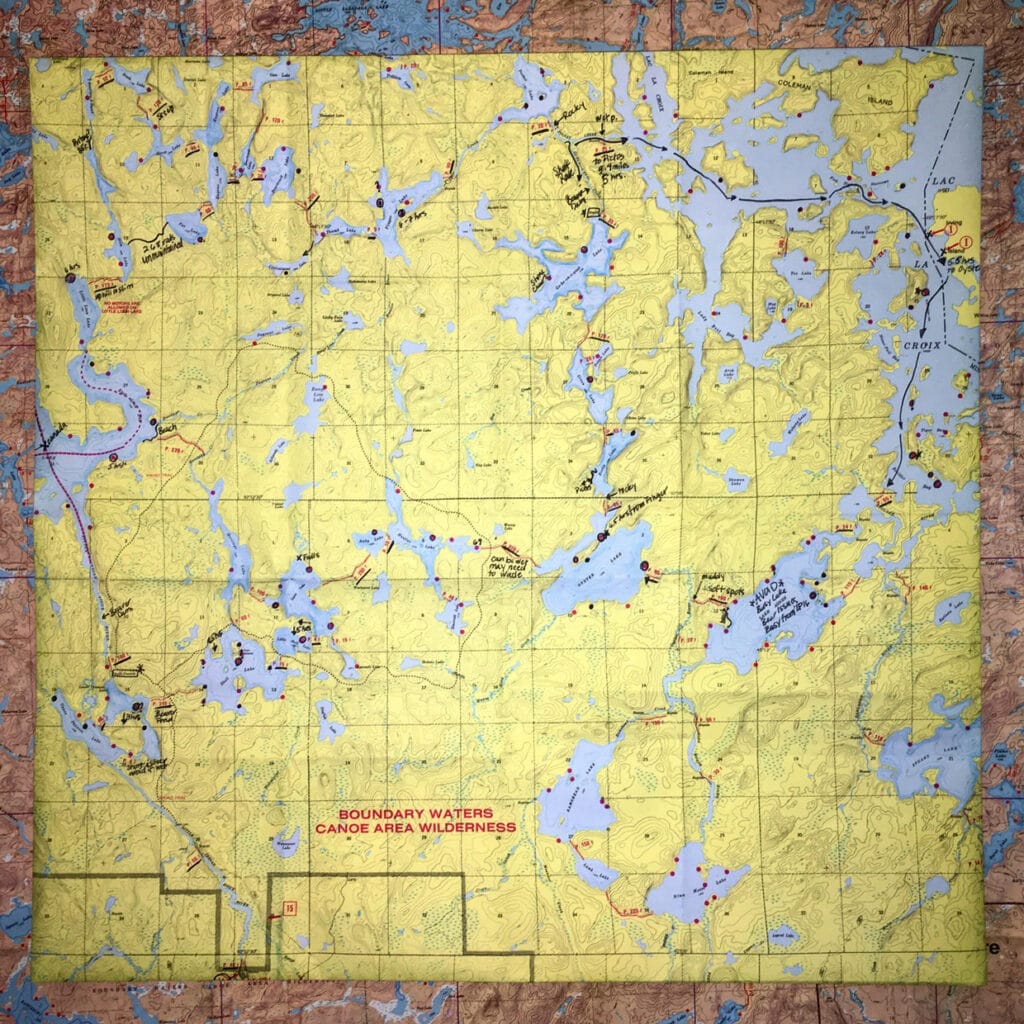
Now that you have a good understanding of everyone’s limits and abilities, it’s time to decide how much you want to travel. How far do you want to go in? How far do you want to travel each day? How often do you want to pack up and move? Would you prefer to make a loop, go out and back, or arrange for a shuttle?
Again, everyone does this differently. We know people who move every day, covering 12 to 15 miles each. Others prefer to base camp and take day trips from there. We like to do a little of both. We take one long trip every summer in which we do a lot of long days and a lot of miles. During those trips, we also try to plan for plenty of days where we stay put and rest.
Here are several additional thoughts to consider. The U.S. Forest Service has reported that more groups are base camping near entry points, a factor in a recent decision to reduce the number of permits at certain entry points. This trend has made it more difficult to find campsites near entry points; forcing some to travel farther than planned, and others to end their trip early.
We’ve only camped near an entry point once and it was a huge disappointment (coincidentally on Disappointment Lake). We pulled into one of two open campsites to find the fire pit filled with trash, the seating area covered with brush and recently-cut branches from the spruce trees that sheltered the tent pads. The latrine was filled with more trash and beer cans and the campsite occupants next to us were noisy. This is an extreme example, and fortunately we haven’t experienced anything like this since.
If you’re physically able, it doesn’t take long to find some solitude. A day or two of travel could offer a lake entirely to yourself. But it’s always important to put safety first. Know your limits and abilities. If you’re unsure, there’s nothing wrong with staying close, especially if it’s your first trip.
What gear do you plan to pack in and how will you outfit your trip?
This is another consideration when planning how far you’ll travel. What does your gear list look like? How much will it all weigh? How many trips will it take to portage it?
On our first long BWCAW trip, we “double portaged”—a smart move when you’re first starting out. That means portaging the canoe and the gear separately rather than trying to get everything across the portage in one hike. Navigating rocky portages with an 18-foot boat on your shoulders is challenging enough. No need to add a forty-pound pack to that. Since then though, we’re committed to getting everything across in one trip. After you’ve experienced mile-long portages through beaver ponds filled with leeches, you’ll be much more willing to leave anything you don’t need at home.
What if you don’t have all of the lightweight backcountry gear? The great thing about the BWCA is the abundance of outfitters that can help outfit your trip. Let’s face it, gear is not inexpensive. And renting is a great way to try before you buy. Don’t let gear prevent you from exploring this incredible place.
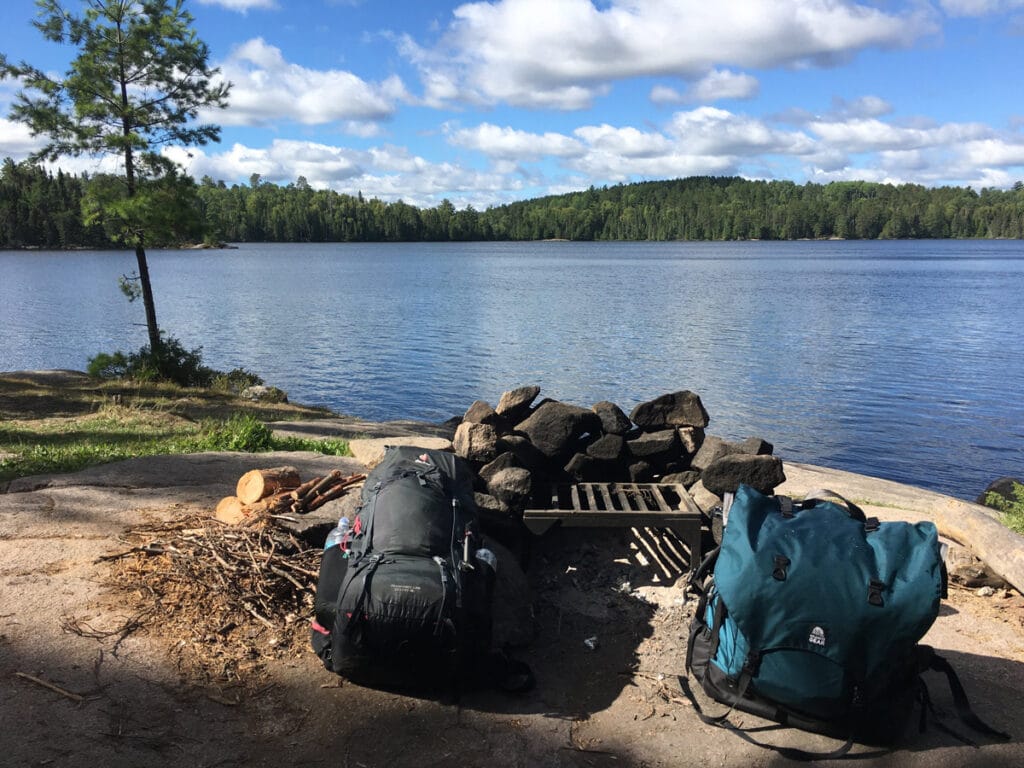
Do you understand the rules and regulations and are willing to plan a trip within those boundaries?
As I’ve mentioned, there are rules and regulations. Each of these rules was designed first and foremost with our safety in mind. In addition, these rules protect other visitors, the land, and wildlife. Due to increased usage over the last two summers, the U.S. Forest Service has experienced an increase in complaints and violations. They are working hard to more closely monitor the area this coming season.
Before planning your trip, take time to review the rules and regulations with everyone in your group. If you’re unable or unwilling to follow through, consider other options. If you’d like to travel with a group larger than nine, consider booking a few sites in a National Forest campground where you can enjoy your friends and family in the same natural beauty the wilderness offers. If you prefer traveling and fishing with a motor, look into the backcountry campsites in the Superior National Forest that are outside the designated wilderness. Find the best option that ensures both your group and others have the best experience possible.
How prepared are you to deal with the unexpected?
We had just finished setting up camp and were ready to crawl into our hammocks and relax during a recent BWCA backpacking trip. In mere moments the sky filled with dark clouds and thunder rumbled across the lake. We barely had enough time to take our hammocks down and crawl into our tent before the storm began with a vengeance. This was the scariest storm I’ve ever been in. To this day I can’t believe our tent stayed standing.
As all storms do, the thunder, lightning, wind, and rain eventually passed. As we got back to our day, I noticed that my husband had been gone a while. Feeling a bit concerned, I followed the trail and called out, he laughed and said, “A tree fell on the latrine.”
This is a funny story that ended well. Unfortunately, that’s not always the case. How prepared are you for things to go wrong? Bad weather, wildlife, and injuries are all possible in the wilderness. Would you know what to do?
Ready to start planning?
I hope this list of questions has inspired you to put a little extra thought into planning your Boundary Waters adventure before you hit the water. In my opinion, it’s part of the fun and gives you something to look forward to, especially during the long cold winter.
Not only will these questions ensure a safe and successful trip, but a little extra planning will guarantee you have a lot more fun. The US Forest Service has put together a comprehensive guide with everything you need to know before you plan your trip. It’s a great reference piece you’ll return to each and every year. You can download a copy here.
A trip to the Boundary Waters Canoe Area Wilderness is an experience you’ll never forget. With the proper planning, you’ll have a great time challenging yourself while connecting with the people you love. And hopefully, it will inspire you to share and protect this special place for generations to come.
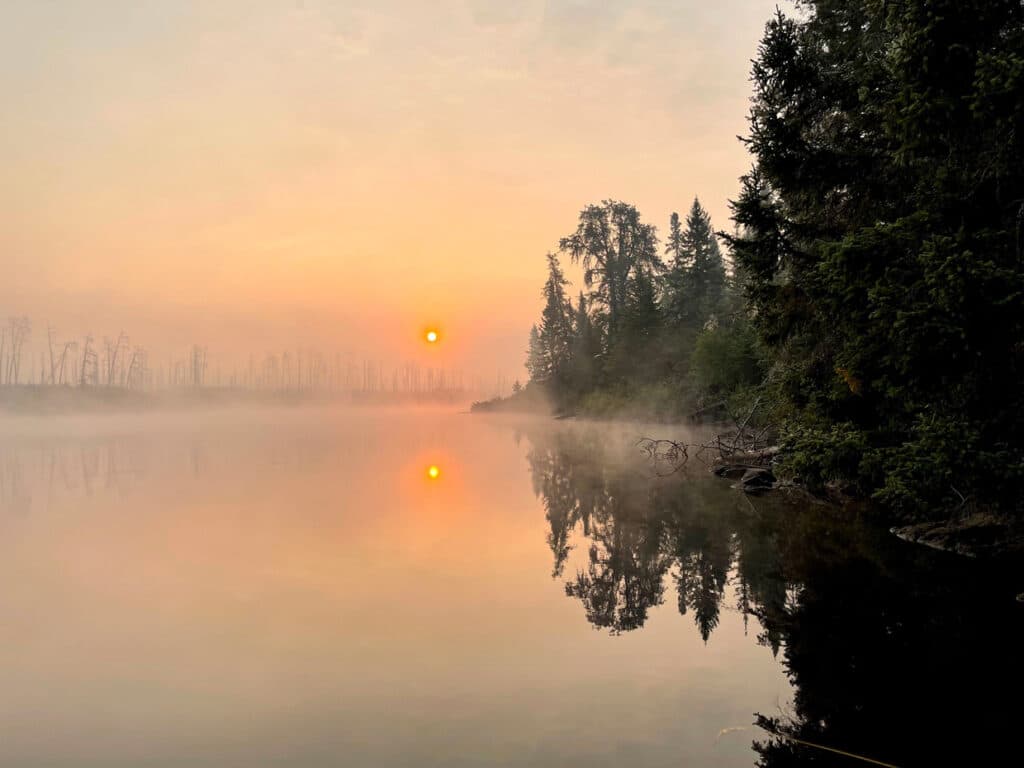
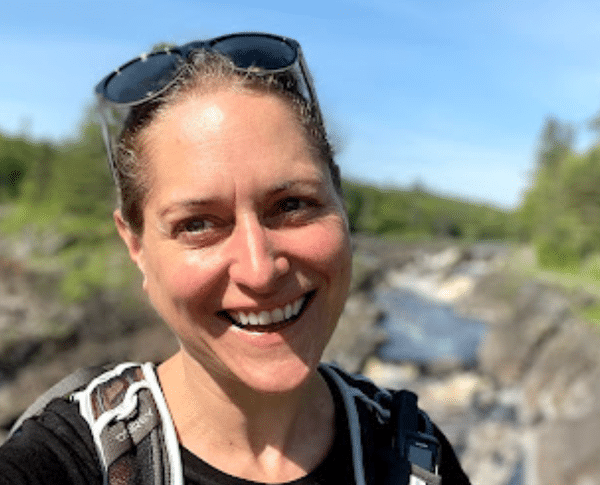
Holly Scherer is a Minnesota-based writer, photographer, outdoorswoman, and guide. She’s most at home in the great outdoors; camping, hiking, paddling, cycling, and gardening. When she’s not on an adventure, she and her husband live in the Twin Cities where they’re fond of saying, “home is where we store our outdoor gear.”








